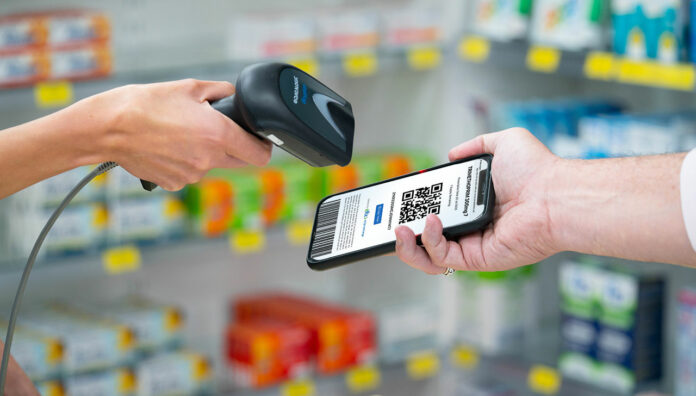ADVERTORIAL BY THE AUSTRALIAN DIGITAL HEALTH AGENCY
Pharmacists will soon be able to use a pharmacy-centric, cloud-based model to view all of a patient’s active prescriptions and dispense them without a patient presenting a QR barcode or token.
Active Script List (ASL) is the second stage of the Australian Digital Health Agency (the agency) plan to introduce digital initiatives that will streamline the dispensing process.
The first stage of the plan was the introduction of electronic prescriptions requiring a unique barcode or token, sent via SMS or email to a patient, and scanned by the pharmacist.
ASL is expected to overcome the issue of lost tokens, as well as assist with medication management, especially for patients who have difficulties managing multiple tokens and paper scripts, Jarrod McMaugh MPS, who has assisted the agency in the development of ASL, told Australian Pharmacist.
‘It will also allow pharmacists to spend more time talking to patients about their health and less time on clerical work,’ he said.
‘Convenience is another factor that will be attractive to patients. They can phone the pharmacy, or send an SMS, and simply go in and pick up their prescription after an identity check.’
Regina Cowie MPS, National Health Care Services Manager for API Group (Priceline/Soul Pattinson/Pharmacist Advice) told AP that the pandemic has shown pharmacists just how important technology is.
‘Patients want this accessibility, and greater control of their health,’ she said. ‘We’re finding that even older people are onboard with electronic prescriptions. ASL will not just be different, it will be better.’
Embracing digital advances
For pharmacists, ASL means no more wasting time shuffling around with paper, or getting multiple QR codes, Ms Cowie said. ‘A doctor sends five scripts to the cloud, the patient tells the pharmacist which ones they want, and the pharmacist dispenses them.’
The risk of transcription errors will be eliminated, she says, and ASL comes with an opportunity for pharmacists to potentially grow their customer base and script volume.
‘They will need to make adjustments to workflow first,’ Ms Cowie said. ‘At the moment, many pharmacies will be getting paper prescriptions faxed, or brought in; electronic prescriptions and QR codes; and people wanting services such as flu vaccinations.
‘Not only do they need to familiarise themselves with ASL, they must work through the best system for monitoring all channels of communication, so requests are not missed or forgotten.’
Electronic queue software can assist. Making sure their software provider is conformant to electronic prescriptions, and running regular software upgrades, is also important, said Ms Cowie.
On a practical level, ensuring the pharmacy has an adequate number of computer terminals, a Healthcare Provider Identifier-Organisation (HPI-O) number and is connected to the HI service, as well as Open Prescription Delivery Service software, is key.
How ASL works
Before going to see a doctor, a patient can ask their preferred pharmacy to register them for an ASL. It is up to the pharmacist to discuss the benefits of prescription management, privacy implications, distance ordering of medicines, and consent.
‘While consent can be indefinite, it can also be cancelled by the patient at any time, or given only for 24-hours,’ Mr McMaugh said.
At their medical centre, a patient requests an electronic prescription from the doctor, and this will be added to the ASL. Pharmacists can then use a patient’s individual healthcare identifier (IHI) to identify all active electronic prescriptions within the Prescription Delivery Service (PDS) and issue those requested by the patient.
‘Patients can choose to leave sensitive prescriptions off the list and have a choice about
how their medicines are managed,’ Mr McMaugh said.
They will continue to receive a token, even if they have an ASL, so they can get the electronic prescription filled by a pharmacist scanning the token, or by a pharmacist they have authorised, accessing their ASL. They may also request paper prescriptions for one
or all of their medications.
As well as electronic prescriptions, computer-generated paper prescriptions will be displayed on the ASL if they contain a barcode from the Prescription Delivery Service
(i.e. eRx and MediSecure). In this instance, pharmacists need to tell patients that they still need the paper prescription for these to be dispensed.
Mr McMaugh added that the ASL will not show the complete contents of a prescription, until it is downloaded, and that Schedule 8 medicines will be displayed in a person’s ASL.
‘All regulations for Schedule 8 medicines (other than requirements for handwriting, which are exempt) are applied to electronic prescriptions and ASL.’
Patient-centric apps
Mobile applications are already available to assist with electronic prescription tokens and medication management. Apps that allow patients to register for an ASL themselves should be available in 2021. These apps will allow them to manage, access and to add, remove or change any agents for their ASL, as well as decide which prescriptions are visible.
No matter what app you use, you can’t block another app from seeing
the same electronic prescription, said Ms Cowie, who added that the API Group already has its own free apps to help people manage their medicines.
Mr McMaugh believes patients will be highly motivated to use this technology, in the same way they use apps to shop, or do their banking.
Both the agency and the Pharmaceutical Society of Australia have resources, including facts
sheets and videos, to assist with ASL learnings.
For more information please visit digitalhealth.gov.au.




 ‘We’re increasingly seeing incidents where alert fatigue has been identified as a contributing factor. It’s not that there wasn’t an alert in place, but that it was lost among the other alerts the clinician saw,’ Prof Baysari says.
‘We’re increasingly seeing incidents where alert fatigue has been identified as a contributing factor. It’s not that there wasn’t an alert in place, but that it was lost among the other alerts the clinician saw,’ Prof Baysari says.


 Beyond the arrhythmia, AF often signals broader pathological processes that impair cardiac function and reduce quality of life and life expectancy.5 Many of these conditions are closely linked to social determinants of health, disproportionately affecting populations with socioeconomic disadvantage. Effective AF management requires addressing both the arrhythmia and its underlying contributors.4
Beyond the arrhythmia, AF often signals broader pathological processes that impair cardiac function and reduce quality of life and life expectancy.5 Many of these conditions are closely linked to social determinants of health, disproportionately affecting populations with socioeconomic disadvantage. Effective AF management requires addressing both the arrhythmia and its underlying contributors.4  C – Comorbidity and risk factor management
C – Comorbidity and risk factor management Warfarin
Warfarin







